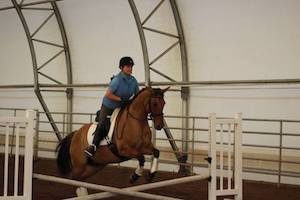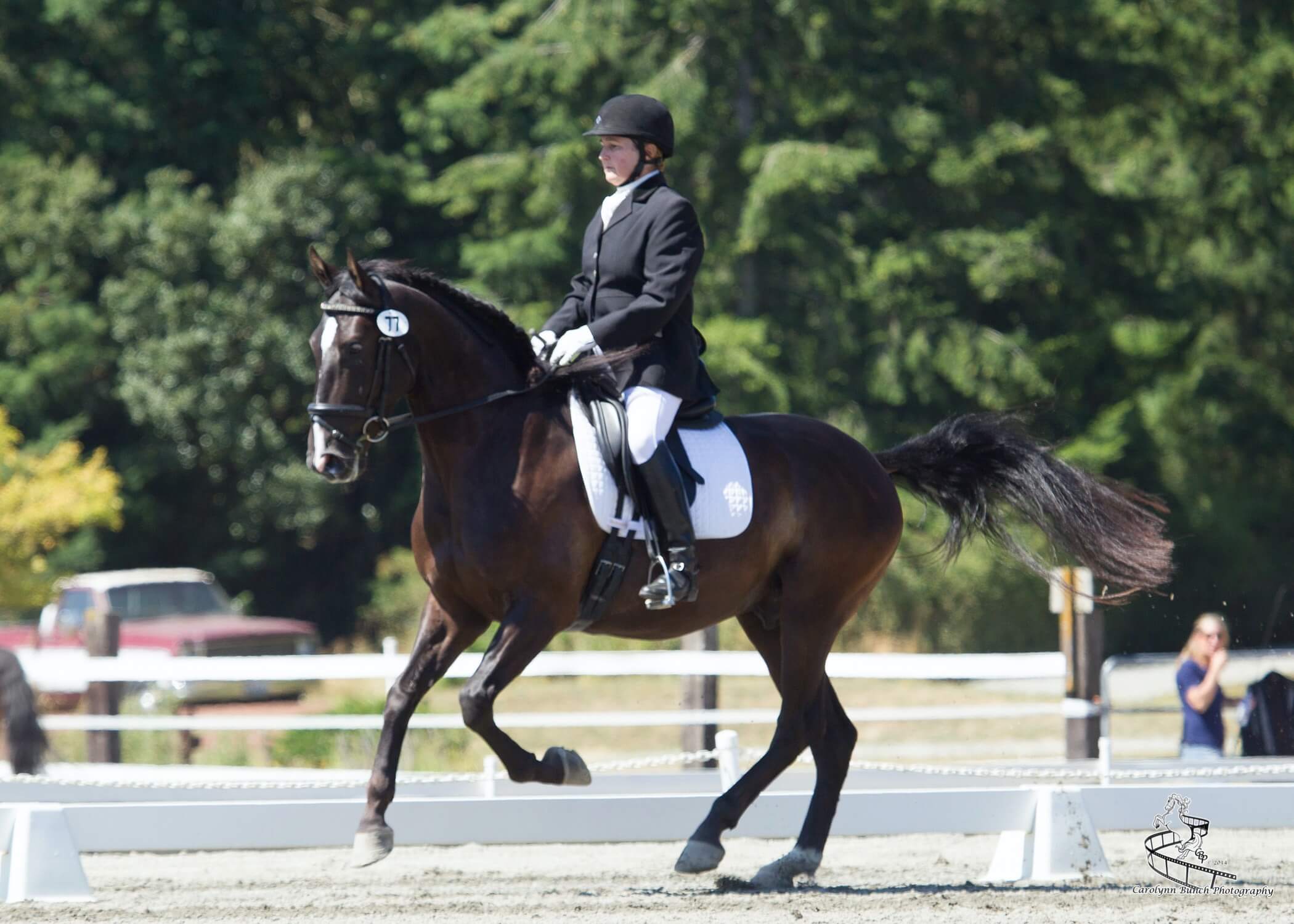Finding Answers for Training Problems
by Kim Roe

Early in the year I sit down and outline long-term and short-term goals for each of my performance horses. I then strategize a training protocol that will help me get there.
Unfortunately, with horses our goals often have to change. Horses don’t care about our plans, and their minds or bodies can set us on a different path than the one we hoped for.
Last summer I purchased a wonderful 14-year-old Quarter horse gelding that I hoped would be my working equitation horse. In his previous life, Gunner was a successful and talented gaming horse so I knew giving him this new job might be challenging. But he has a good mind, is athletic, and I figured, why not? If nothing else I will have a great little horse for trail riding, which is another of his talents.
Last fall I took him to a week-long working equitation seminar taught by Nuno Matos of Portugal. Gunner did great, and Nuno was impressed by his ability to collect, bend, and turn quick. Gunner took well to the dressage and working the obstacles, but sometimes I found overwhelming tension rising up in him. I attributed it to his anticipation that he might be asked to run fast.
But there were clues that something was wrong physically that I didn’t want to see. He frequently stretched to urinate, but didn’t go. He sweated profusely even though he was fit, it wasn’t hot, and he wasn’t being worked that hard. He worked “up” not down, so the more tired he was the more stressed he became. And he would hump his back when saddled and refuse to let me mount.
The older I get, the more I realize that horses have good hearts and try for us. They aren’t capable of strategizing how to be bad. When things go wrong in the training, we have to search for the reason. Over the winter I came to realize that Gunner’s confusing behavior had to have a physical reason.
I had a saddle fitter fit his saddle, and treated him for ulcers and arthritis without luck. Finally, I was talking to a student whose horse had similar symptoms and had just been diagnosed with PSSM, and I thought, aha! I’ve since started a new journey of diet changes and exercise protocols for Gunner. I’ve sent hair off for genetic testing (which isn’t always conclusive) and have spent hours learning about PSSM. I’m cautiously hopeful, and have put away goals for Gunner for now. I’m just enjoying every day with the horse I love, listening to him, and letting him set the pace for our work.
Enjoy our Performance Horse issue and, as always, feel free to contact me with your thoughts. [email protected].
Originally Published July 2017 Issue

Kim Roe grew up riding on the family ranch and competed in Western rail classes, trail horse, reining, working cow, and hunter/jumper. She trained her first horse for money at 12 years old, starting a pony for a neighbor.
Kim has been a professional dressage instructor in Washington state for over 30 years, training hundreds of horses and students through the levels. In recent years Kim has become involved in Working Equitation and is a small ‘r’ Working Equitation judge with WE United.
Kim is the editor of the Northwest Horse Source Magazine, and also a writer, photographer, and poet. She owns and manages Blue Gate Farm in Deming, Washington where she continues to be passionate about helping horses and riders in many disciplines.






